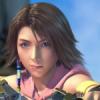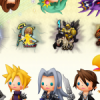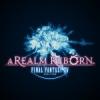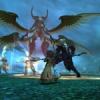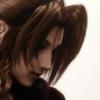Developed and released in 2000 by Squaresoft - now Square Enix - at the end of a console’s life cycle, Final Fantasy IX was released during a time of great transition for both the gaming industry and Squaresoft.
In 1999 Squaresoft announced that they would be developing the next three games in the Final Fantasy series in unison with each other. This effort was intended to show gamers that the company was able to provide three different styles of games, and Final Fantasy IX was a retro look back at the early days of the Final Fantasy franchise.
Squaresoft wanted to bring the focus back in on the fantasy aspects of their storytelling, and move away from their gradual shift towards science fiction stories of their previous installments in the series. Final Fantasy IX was the last Final Fantasy to appear on the original PlayStation, as the system was nearing the end of its life cycle, and Squaresoft pushed the system to its limits.
Final Fantasy IX’s plot is primarily centered around a war between city-states on the heavily populated Mist Continent of Gaia. The low lands of the continent are covered with a mysterious mist that powers steam engines and the airships of the city-states, providing a trade network across the land. A long-standing peace has presided between the large City-States that dominate the continent. However, when the Queen of Alexandria begins to lust after more power, events are set in motion that plunge the entire continent into war.
Rumors of mysterious Black Mages terrorize the country side, and aggressive monsters born of the mist have already set the City-States on alert. A mysterious man holds the ear of Queen Brahne of Alexandria, urging her to go to war and take over the continent. Princess Garnet, fearful of this course, leaps at the first opportunity to escape by allowing herself to be kidnapped by the Tantalus Theater Troup. The Troup of supposed actors are actually world renowned thieves, and you are introduced to the main protagonist: Zidane Tribal, the womanizing apprentice thief of Final Fantasy IX.
The game’s plot has you traveling the world attempting to solve the mystery behind Queen Brahne’s sudden power-mongering, and try to uncover the true motives of a mysterious man whispering in her ear. Along the way you’ll follow the story of a wide range of memorable characters whose their plots all converge as the continent falls deeper into war.
Initially, Final Fantasy IX may appear light-hearted and less serious than the previous two installments of the franchise; an extended opening sequence layers on some slapstick humor and characters are proportioned in an exaggerated cartoon style that’s a world apart from the previous game’s attempt at realistic character renderings; but IX is layered with deep thought-provoking themes. You a meet a young Black Mage, Vivi, who struggles with questions about life and death. You will also witness the horrors of war, as populations are displaced and families are torn apart by the Queen’s greed.
Despite the large cast of characters, they’re all memorable and interesting. Seeing the central plot unfold from several different perspectives is a welcome change to the traditional direct story telling methods that most games employ. The memorable character moments and bonds are something we’re certain you will enjoy over the course of the story.
With Final Fantasy IX being Squaresoft’s look back at their heritage it is filled with themes and story homages to several of their previous games. Most of Final Fantasy IX’s story can directly be traced back to the story of Final Fantasy IV, whose plot centered on a man disillusioned with his home kingdom which has begun countless wars of aggression against its neighbors.
Both Final Fantasy IV and Final Fantasy IX deal with themes of unprovoked wars and their impact, as well as the relationship between brothers who have gone down two different life paths. Gameplay is largely traditional, true to Square’s word - the ATB battle system returns, while the game revives much of the character abilities and skills that were present in Final Fantasy IV.
However, Squaresoft adds a host of new features to Final Fantasy IX, many of which are unique and help Final Fantasy IX stand out in the franchise. With an emphasis on multiple perspective storytelling, the developers introduced a system called Active Time Events, or ATE. At various points in the game, you’re presented with the option to switch between characters during plot moments.
Many of the more memorable character moments that take place between the cast happen during these ATEs, giving you greater insight to character quirks and personalities. We can’t say enough about ATEs and how they help to make Final Fantasy IX’s characters some of the most memorable in the entire franchise.
While these characters have set roles within your party, you can teach them new abilities, much like the Esper system of Final Fantasy VI. As you level up, party members gain Ability Points (AP) that can be funneled into learning new skills. Once learned, these abilities are able to be equipped to individual characters. This system, combined with the versatile main cast of characters, gives Final Fantasy IX an extensive amount of party member variation. Your party will need all of their abilities, as you encounter an abundance of random battles throughout your travels.
The first half of Final Fantasy IX is a tightly-woven narrative that feels very cohesive and focused, creating an engaging story that is readily enjoyable. The ATE system is at its best during these early hours, as it works well with the greater focus on individual characters and their development. The pacing of leveling up is also perfectly balanced on the Mist Continent, while the constant push to keep the story moving rarely has you needing to stop and grind up a few levels or earn enough money for new gear.
However, after you leave the Mist Continent about half way through the game, the focus and direction of the story begins to waver. Furthermore, the grinding that was so carefully avoided in the first half starts to rear its ugly head. Combat gets a bit tedious at times when you have to really grind through some of the levels to tackle some of the poorly-paced moments later in the game, which bring in cruel difficulty spikes that aren’t clearly signposted. This poor pacing in the latter half of the game is even more apparent when you compare it to how well the first half of the game was handled; it’s a shame because it is one of the major Final Fantasy IX‘s major drawbacks.
Final Fantasy IX does have some of the most unique art direction of any game within the series. To complement its fantasy story, Art Director Hideo Minabathe made the world more vibrant and abstract than previous franchise entries, with much more of an emphasis on stylization rather than realism. Square pushes the PlayStation to its graphical limit with one of the best-looking games on the system. While environments are pre-rendered - fully 3D-environments weren’t introduced to the series until 2001′s Final Fantasy X - the backdrops are filled with impressive amounts of detail, while some subtle animation effects help them to feel alive. Minaba’s direction gives each city and region its own distinct feeling, all the while remaining consistent with the fantastical steam punk over-arching aesthetic.
Furthermore, Characters have a level of detail that’s unprecedented on the system, with each character having radically different art styles and character models. There are even several costume changes for the main cast as they travel between locations that we really appreciated. With so much variation it would be easy for the game to fall apart into an incoherent visual mess, but somehow it all hangs together beautifully.
The memorable art and visual styling is complimented by Nobuo Uematsu’s extensive musical score, incorporating many musical elements from previous titles in the franchise. Uematsu exclusively worked on the entire score, rounding the soundtrack out at 110 tracks giving Final Fantasy IX one of the largest musical scores in gaming history. And though the music is rendered in Midi, rather than the sweeping orchestral scores that we’re so used to these days, every single iota of potential is eked out of the system.
In the end, Final Fantasy IX was a book end to a long chapter in videogame history. Squaresoft found itself moving in a different direction in later years. The intent of Final Fantasy IX was to join with fans of the series in celebration of where the Final Fantasy franchise had been; after Final Fantasy IX, the series made a dramatic turn in almost every aspect. Several Key figures that helped make Final Fantasy the juggernaut franchise it is today parted ways with the company, or took on diminished roles after the completion of Final Fantasy IX - including executive producer, and franchise creator Hironobu Sakaguchi, as well as musical composer Nobuo Uematsu. In addition, the series gradually returned to more sci-fi stylings, while spin-off after spin-off was pumped out to keep the money rolling in - with varying degrees of success.
Going back to Final Fantasy IX now, nearly 15 years since its original release, it’s remarkable how fresh it still feels. The game still looks gorgeous thanks to the timeless renderings of the world, while the sheer charm and gentle humor in many of the story’s more memorable moments is refreshing after being subjected to increasingly po-faced characters in later games. It’s also a game which side-steps much of the over-wrought philosophizing and existentialist navel-gazing that the series has become known for over the years. It doesn’t attempt to reinvent the wheel; it simply attempts to be a damn good RPG with a damn good story.
And sometimes, that’s all that matters.


